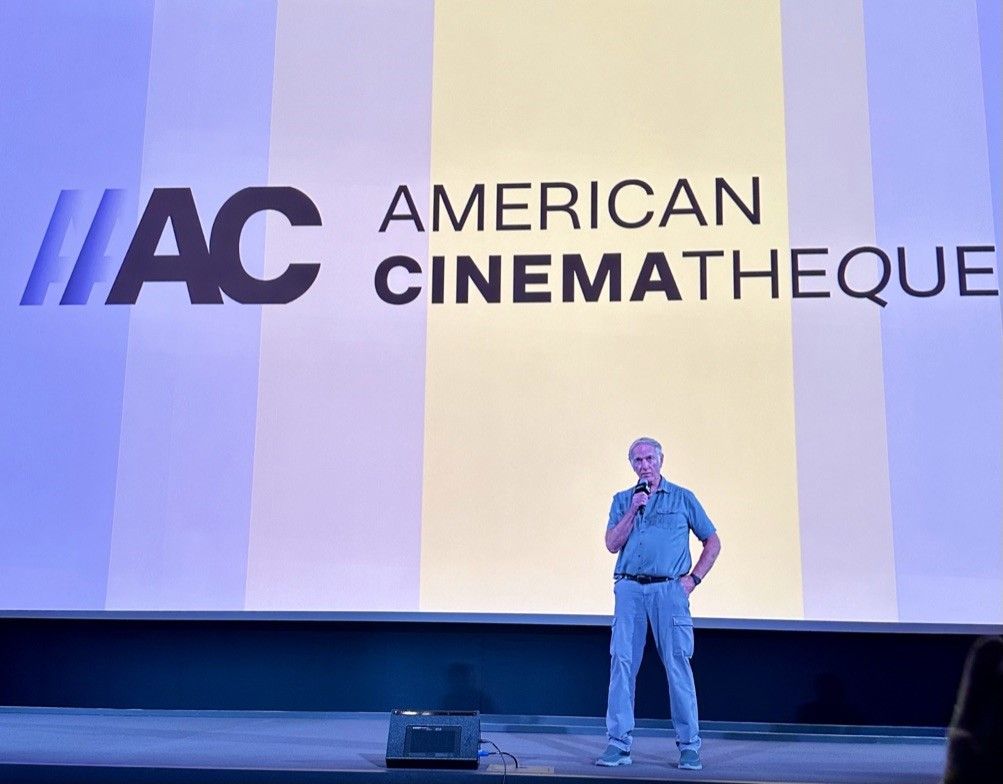How the West Was Revised
Rebecca Giordano considers the transformation of the Western genre, both its limitations and its possibilities.
By Rebecca GiordanoDecember 24, 2023

LONE STAR at the Egyptian Theatre, Los Angeles, December 14, 2023.
At its 4K restoration premiere at the newly renovated Egyptian Theatre, I learned secrets that changed how I see Lone Star, John Sayles’s 1996 Western. On the eve of the dedication of the Sheriff Buddy Deeds Memorial Courthouse in Frontera, Texas, two wandering off-duty army officers discover a pristine skeleton and a rusty Rio County Sheriff’s badge. The film follows the reluctant Sheriff Sam Deeds (a wincing Chris Cooper), the disappointing only son of legendary Sherriff Buddy Deeds (Matthew McConaughy, fresh from Dazed and Confused), as he solves the cold case murder of his father’s predecessor and enemy, Sheriff Charlie Wade (Kris Kristofferson as perhaps the meanest son of a bitch ever to wear a badge). Sam uncovers more than a few bitter family secrets to solve the murder. Lone Star’s structure parallels several painful parent-child relationships, tying the movie’s big questions about history and truth to the experiences of nearly all its characters.
Lone Star is many things: a revisionist Western, a missive from South Texas, a record of 1990s multiculturalism, a portrait of a small town, a meditation on power, race, family, history, and justice. Several great actors with Texan roots (McConaughey, Kristofferson, Cooper) star alongside a strong ensemble of Sayles regulars and local day players who had been working on Walker, Texas Ranger. In floral sundresses, pining for a dead husband, and reuniting with her high school sweetheart, Elizabeth Peña seems stuck in a listless romantic drama. Her misplaced affect and unconvincing accent crack the movie’s otherwise flawless Texan patina. Lone Star makes the most of the desert landscape in big sweeps and small details. Elegant single shot pans over ordinary objects that take on hidden meaning (a basket of tortillas, a faded yellow sign, a craggy outcrop on the Rio Grande where love was declared) to signal the flashbacks that introduce us to the characters and history that led to the present.
Sayles is an overtly political filmmaker trained by Western genre master Roger Corman. Last week, the Library of Congress’s National Film Registry inducted Matewan, Sayles’s treatment of a 1920s coal miner strike in West Virginia. Among the LA industry-heavy audience at the Egyptian theater that night, it was clear that Sayles has become a force in his own right. The audience wanted details that those familiar with the process often want to know: what hit the cutting room floor, frustrations with producers, the logic of casting choices, the ethos behind his love of editing, and even his notebook preferences.
During the Q and A, Sayles discussed techniques behind his taut yet sprawling epic films and novels. After researching the location’s history, he writes a biography for each character. He maps the plot using a system borrowed from Golden Age of Hollywood director Allan Dwan: Write each character’s name around the circumference of a circle. For each way characters connect, draw corresponding a line. If a character only has one or two lines connecting them, cut ‘em loose or draw them deeper into the fray. The step “glues things together,” ensuring a complex layering of “different little worlds.” Coincidentally, the Egyptian Theatre hosted the very first Hollywood movie premiere ever for Douglas Fairbanks in Robin Hood, Dwan’s 1922 blockbuster.
Knowing the process, it’s easy to see the benefits of Sayles’s methods throughout Lone Star. The specifics of the difficult, contradictory characters draw from its location and provide a realism that balances the genre’s tropes. For instance, in a departure from the mythic West’s “cowboys and Indians,” local hustler turned pillar of the Black community, Big O, maintains a Black Seminole museum attached to his long-running juke joint. Through this, the film directly addresses Texas’s fraught histories of slavery, colonization, and the moral ambiguity of existing alongside those systems.
As with all good Westerns, Lone Star viewers are put through the paces of asking what makes a person good or bad using the imaginary space of the West’s lawless, open terrain. But in Lone Star, it’s not the badge that makes the man. More than the three white Rio County Sheriffs, Big O provides the moral voice for a film that never takes its eye off the Border. Big O explains to his estranged son, a “spit and polish” Army General who has never forgiven him for leaving his mother: “You see, there’s not a borderline between the good people and the bad people. You’re not on one side or the other.”
¤
Photo by contributor.
LARB Short Take live event reviews are published in partnership with the nonprofit Online Journalism Project and the Independent Review Crew.
LARB Contributor
Rebecca Giordano is an art historian based in Los Angeles.
Did you know LARB is a reader-supported nonprofit?
LARB publishes daily without a paywall as part of our mission to make rigorous, incisive, and engaging writing on every aspect of literature, culture, and the arts freely accessible to the public. Help us continue this work with your tax-deductible donation today!